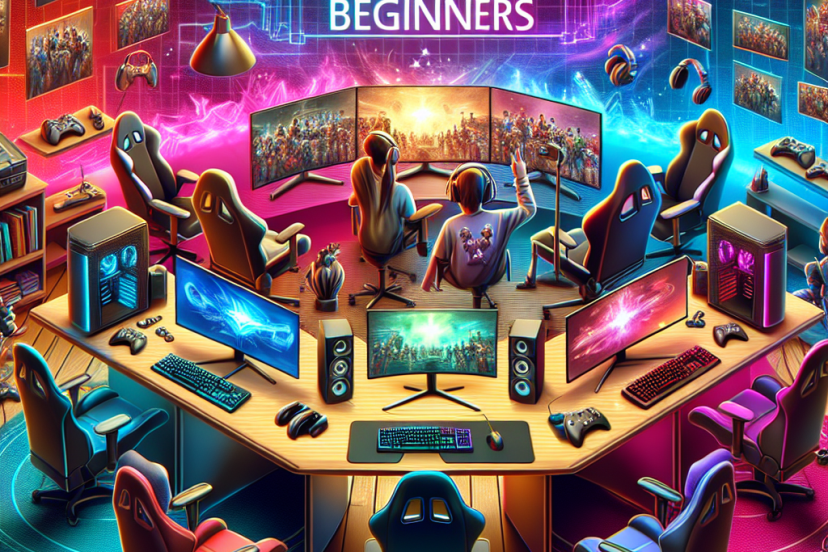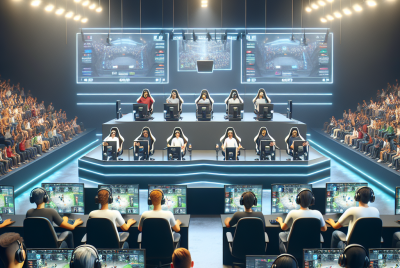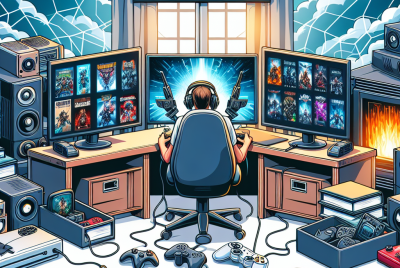The Best Custom Gaming PCs Under $1000
Choosing the Right Custom Gaming PC Under $1000
When it comes to diving into the world of gaming, the right hardware can make all the difference in delivering smooth gameplay and stunning visuals. For gamers on a budget, there are excellent options for custom gaming PCs available for under $1000. This article explores key components, notable builds, and considerations to help you make an informed decision.
Key Components to Consider
- CPU (Central Processing Unit)
The CPU is the brain of your gaming PC. For a well-rounded gaming experience, consider an AMD Ryzen 5 or Intel Core i5, which offer good performance for most games. Ryzen 5 5600X and Intel Core i5-11400 are popular choices offering robust performance without breaking the bank.
- GPU (Graphics Processing Unit)
A powerful GPU is essential for high frame rates at higher resolutions. For under $1000, look for options like the NVIDIA GeForce GTX 1660 Super, AMD Radeon RX 6600, or the RTX 3050. These GPUs provide solid performance and support modern gaming titles.
- RAM (Random Access Memory)
A minimum of 16GB of RAM is typically recommended for gaming. This will ensure buttery smooth performance, especially when multitasking. Brands such as Corsair, G.Skill, and Crucial offer reliable options at competitive prices.
- Storage
Solid State Drives (SSD) are essential for system responsiveness. A combination of a 500GB SSD for your OS and frequently used games, alongside a larger HDD (1TB or more) for bulk storage, is a practical approach. Brands like Samsung and Western Digital have cost-effective SSD options.
- Motherboard
Your motherboard must be compatible with your CPU and should support future upgrades. Look for a B550 motherboard for Ryzen CPUs or a B560 for Intel. Ensure it has enough USB ports and slots for additional RAM or graphics cards.
- Power Supply Unit (PSU)
A reliable PSU is crucial to ensure system stability. Opt for a unit with at least 80 PLUS Bronze certification from reputable brands like EVGA or Corsair, with a wattage rating that meets or exceeds your build’s requirements.
- Case and Cooling
A stylish case with good airflow can keep your components cool. Brands like NZXT and Fractal Design offer cases that look great and provide ample cooling options. Ensure you also consider additional cooling fans if your chosen components generate extra heat.
Notable Custom Gaming PC Builds Under $1000
- The Budget Behemoth
- CPU: AMD Ryzen 5 5600X
- GPU: NVIDIA GeForce GTX 1660 Super
- RAM: Corsair Vengeance LPX 16GB (2 x 8GB)
- Storage: Kingston A2000 500GB NVMe SSD + Seagate Barracuda 1TB HDD
- Motherboard: MSI B550-A PRO
- PSU: EVGA 600 W1, 80+ WHITE 600W
- Case: NZXT H510
This build offers a balanced approach to gaming, providing solid performance on 1080p settings across the board. The combination of an SSD and HDD ensures quick boot times while offering ample storage for games and applications.
- The Mid-Range Marvel
- CPU: Intel Core i5-11400
- GPU: AMD Radeon RX 6600
- RAM: G.Skill Ripjaws V Series 16GB (2 x 8GB)
- Storage: Crucial P3 500GB NVMe SSD
- Motherboard: ASUS TUF Gaming B560-PLUS
- PSU: Corsair CV550, 80 PLUS BRONZE
- Case: Phanteks Eclipse P300A
This build focuses on delivering higher performance, especially for titles demanding more from the GPU. It provides excellent 1080p gaming capabilities and efficient cooling solutions, ensuring optimal performance over extended gaming sessions.
- The Esports Optimizer
- CPU: AMD Ryzen 5 3600
- GPU: NVIDIA GeForce RTX 3050
- RAM: Team T-Force Vulcan Z 16GB (2 x 8GB)
- Storage: Samsung 970 EVO Plus 500GB NVMe SSD
- Motherboard: ASRock B450M PRO4
- PSU: Thermaltake Smart 600W
- Case: Cooler Master MasterBox Q300L
Ideal for competitive gamers, this build prioritizes high frame rates and quick load times, making it perfect for titles like CS:GO, Valorant, or Fortnite. The RTX 3050 ensures access to NVIDIA’s DLSS technology, further enhancing performance.
Upgradability Potential
One of the most significant advantages of a custom build is the opportunity for future upgrades. Ensure you select a motherboard with enough RAM slots and PCIE slots to accommodate future graphics cards and additional storage solutions.
When building a gaming PC under $1000, consider components that are highly rated for longevity and performance. For example, opting for a motherboard with built-in Wi-Fi can save you from needing an additional network card later down the line.
Where to Buy Components
- Online Retailers
Websites like Newegg, Amazon, and Micro Center frequently offer competitive pricing on components, especially during sales seasons. You can often find bundled deals that can save you money.
- Local Retailers
Check your local computer hardware stores for items that might be out of stock online. Retailers like Best Buy may also have in-store pickup options for urgent needs.
- Used and Refurbished Parts
Sites like eBay and Facebook Marketplace may offer used components, often at significant discounts. Exercise caution and make sure to verify seller ratings and return policies.
Building Your PC
Once you’ve selected your components, building your PC can be a rewarding experience. Make sure to:
- Gather Tools: A Phillips screwdriver is essential, and consider using an anti-static wrist strap to avoid damaging components.
- Follow Guides: Utilize resources like YouTube or PC building forums for visual aids and step-by-step instructions.
- Test First: Before sealing your case, ensure all components are working properly by booting up the system outside of the case.
Gaming Performance Expectations
With a budget of $1000, you can expect to play most games at 1080p with high settings and decent frame rates (60+ fps). More demanding titles may require some graphical settings adjustments, but competitive gaming will feel smooth and responsive.
Common Questions to Consider
How do I choose the right cooling solution?
When selecting a cooling solution (air vs. liquid), consider your build configuration. Air coolers are generally adequate for most mid-range systems, while liquid coolers may be beneficial for overclocking or high-performance builds.
Is it worth overclocking my CPU or GPU?
Overclocking can yield better performance, but it can also lead to stability issues and increased heat output. If you’re comfortable with the risks and have adequate cooling, exploring this option can be beneficial.
What about peripherals?
While here we focus on building the PC itself, don’t forget peripherals such as monitor, keyboard, and mouse. Brands like Logitech and Razer offer excellent options that can enhance your gaming experience.
By keeping performance, upgrade potential, and cost in mind, you can build an excellent custom gaming PC that doesn’t compromise on experience or quality – all while remaining under the $1000 mark.




